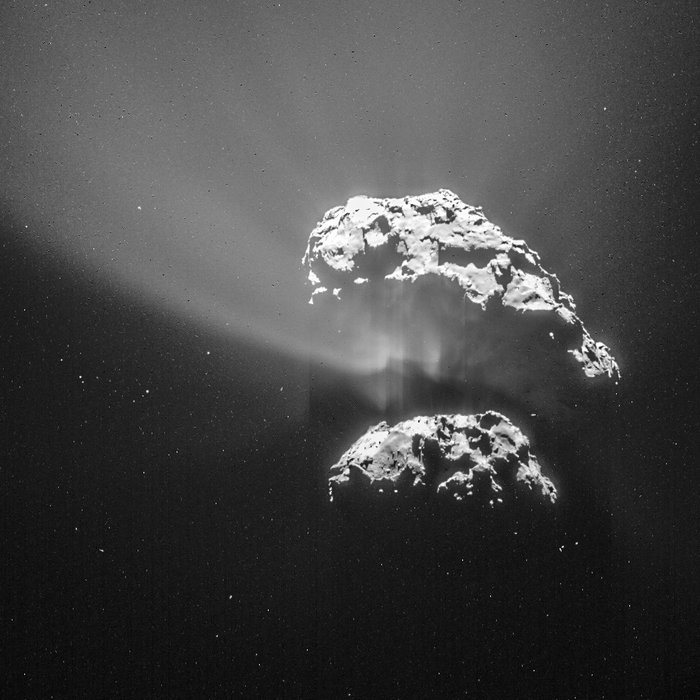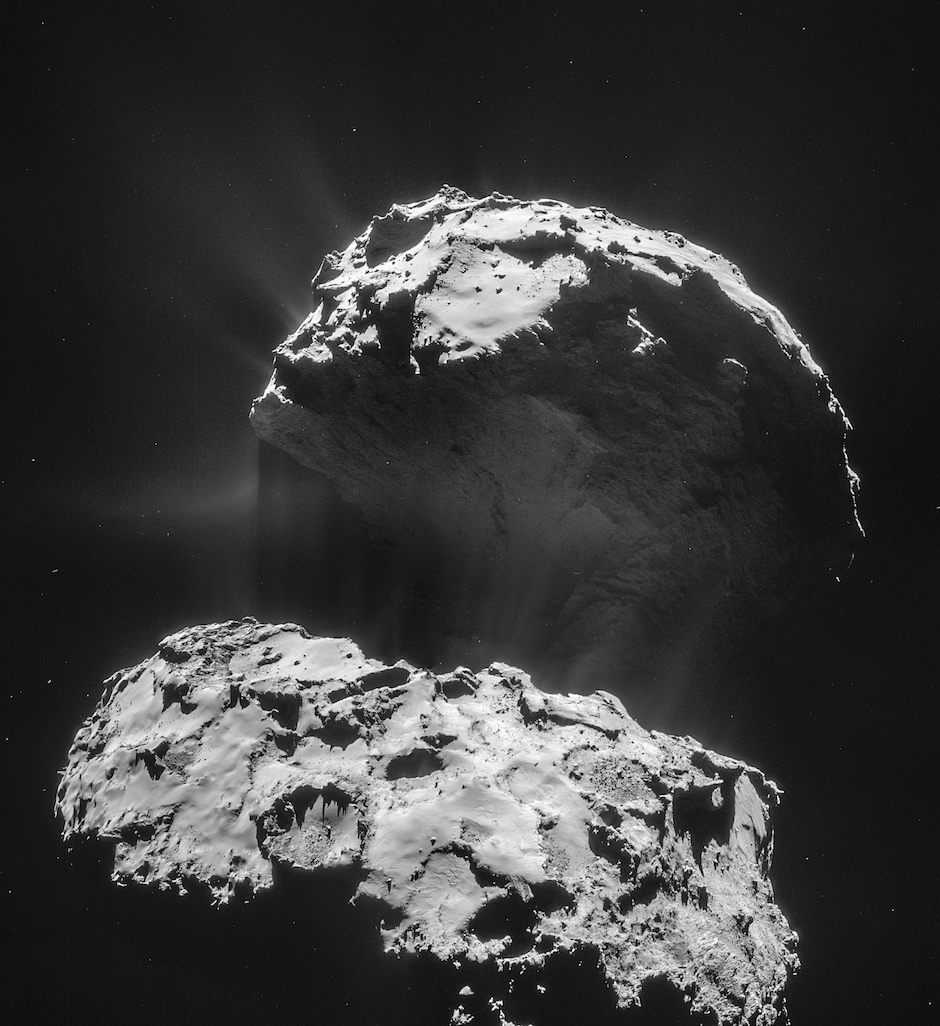
The Rosetta spacecraft neared its comet Saturday, targeting a close flyby within six kilometres of the tiny world’s jagged nucleus to gain new up-close views of the comet and taste the growing vaporous cloud surrounding it.
The flyby is a turning point in the mission, expected to yield unrivaled data from closer to the comet than Rosetta has been before. It also signals the start of a new phase of Rosetta’s study of comet 67P/Churyumov-Gerasimenko, where the spacecraft will fly farther from the comet for its passage closest to the sun in August.
The solar-powered European space probe was expected to be nearest the comet at 1241 GMT, passing about six kilometres (3.7 miles) from 67P’s nucleus.
“The upcoming close flyby will allow unique scientific observations, providing us with high-resolution measurements of the surface over a range of wavelengths and giving us the opportunity to sample — taste or sniff — the very innermost parts of the comet’s atmosphere,” said Matt Taylor, Rosetta’s project scientist at the European Space Agency.
Rosetta will pass closest to the comet larger lobe — the body of the comet’s duck-like shape — with the sun directly behind the spacecraft. The high sun angle should allow Rosetta’s main OSIRIS science camera to tease out new detail on the dust grains clinging to the comet’s nucleus, and other instruments should yield better data on the comet’s make-up.
The flyby will go over one of the comet’s most active regions, where scientists have observed jets of dust and gas streaming away from the nucleus. Rosetta’s science team hopes to measure the material during the flyby, and see how it flows from the comet’s surface to form an atmosphere, or coma, of gas surrounding the nucleus.
The first images of the flyby from Rosetta’s navigation camera are expected by Monday. Sharper views from the OSIRIS camera should be released within about two weeks, according to a blog post on ESA’s website.
Scientists expect to see an uptick in activity from comet 67P in the next few months as it heads for perihelion — or the closest point to the sun in its orbit — on August 13.

“We’re in the main science phase of the mission now, so throughout the year we’ll be continuing with high-resolution mapping of the comet,” Taylor said in an ESA press release. “We’ll sample the gas, dust and plasma from a range of distances as the comet’s activity increases and then subsides again later in the year.”
Rosetta arrived at the comet in August 2014, then dropped the Philae lander to the nucleus November 12. Philae bounced across the comet at least twice — and may have hit the surface a third time — before coming to a stop lodged against a vertical face of rock and ice.
Philae ran out of power two days later after completing its initial science campaign, and officials are hopeful the landing craft will reboot later this year as it gets more sunlight when the comet nears perihelion.
In the last few months, Rosetta flew in a series of “bound” closed orbits around comet 67P. The probe was consistently near the comet, giving scientists a chance to visually search for Philae’s resting position with Rosetta’s OSIRIS camera.
Officials believe they have narrowed Philae’s location to within about a football field on 4-kilometre (2.5-mile) diameter comet.
The hunt turned up a few candidate sites, but no confirmed result.
With comet 67P expected to put out more plumes of dust and gas later this year, Rosetta’s ground team decided to alter the spacecraft’s path around the comet to take it farther from the nucleus as a safety measure, with a series of targeted close-in flybys beginning with Saturday’s approach.
An illustration of Rosetta’s intricate trajectory over the next month is posted below.
The new trajectory means Rosetta will not have a chance to look for Philae over the next few months, but the mothership will always be listening for a signal if the lander wakes up.
“After this close flyby, a new phase will begin, when Rosetta will execute sets of flybys past the comet at a range of distances, between about 15 kilometres and 100 kilometres (9 miles to 62 miles),” says Sylvain Lodiot, ESA’s spacecraft operations manager at the European Space Operations Center in Darmstadt, Germany.
In July, controllers plan to guide Rosetta directly through one of comet 67P’s jets at near peak intensity.
“We hope to target one of these regions for a fly-through, to really get a taste of the outflow of the comet,” Taylor said.
Follow Stephen Clark on Twitter: @StephenClark1.



